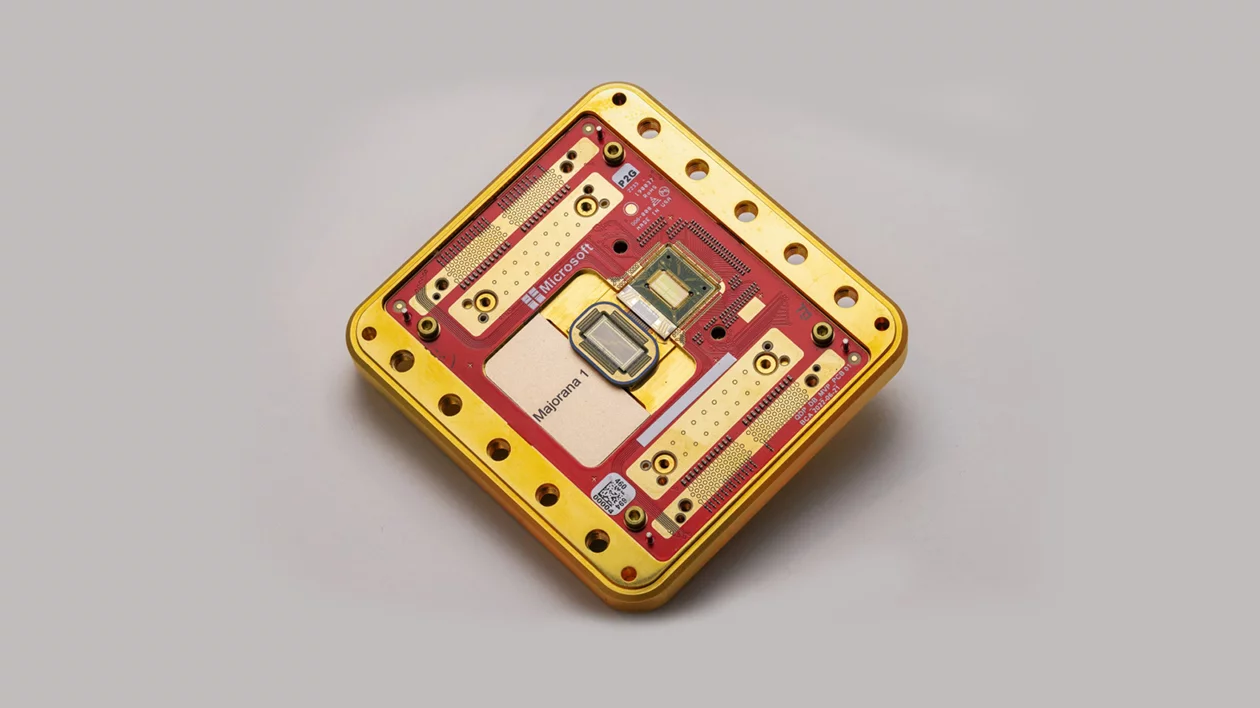In an era where AI headlines dominate the front page, it’s easy to miss the quieter announcements that may prove even more transformative. In early 2025, Microsoft unveiled something that didn’t shout but whispered of a future far more radical than any chatbot or language model: the Majorana 1 quantum chip.
At first glance, Majorana 1 might seem like just another research milestone. But what Microsoft has created—a working quantum processor based on topological qubits—may turn out to be one of the most important breakthroughs in computing history. And while the tech is still in its early stages, the implications stretch from national labs all the way to your home desk.
What is Majorana 1?
Majorana 1 is a prototype quantum processing unit built on a completely different approach than the superconducting qubits used by companies like IBM or Google. Microsoft’s approach centers on a new kind of qubit, derived from elusive quasiparticles known as Majorana zero modes. These particles, if you can call them that, emerge only under very specific conditions and exhibit the kind of stability that makes them ideal for quantum information processing.
Most quantum computers today rely on fragile qubits that require extensive error correction. That overhead makes scaling incredibly difficult. Microsoft’s bet is that topological qubits—protected by the very geometry of their quantum states—could sidestep this limitation. Instead of piling error-correction layers on unstable hardware, Microsoft is trying to build stability into the foundation.
The result is a chip that currently houses just eight topological qubits. That might sound small, but the underlying architecture is what matters. It’s designed to scale—potentially to a million qubits—without the exponential increase in complexity that plagues other approaches.
The Topoconductor Breakthrough
Underpinning the Majorana 1 chip is a new class of materials Microsoft calls “topoconductors.” These are engineered to host and manipulate Majorana zero modes through finely tuned combinations of indium arsenide and aluminum, etched into nanowires shaped like the letter H.
This precise geometry isn’t cosmetic—it’s functional. It allows researchers to isolate and braid Majorana modes, which is crucial for storing and manipulating quantum information in a fault-tolerant way. If these braiding operations can be performed reliably, they offer a path to qubits that are naturally immune to many forms of error—a long-standing holy grail in quantum computing.
The significance here isn’t just technical. If proven robust, topoconductors could form the backbone of quantum processors that don’t require sprawling data centers full of cryogenic plumbing and calibration hardware. They could, in time, be miniaturized and simplified enough to be embedded in devices far beyond the lab.
If Microsoft is right, and if this architecture holds up, the ramifications are enormous.
Most quantum systems today are stuck in what might generously be called the prototype phase. They’re sensitive, loud, and error-prone. Running a useful algorithm—one that’s actually better than what a classical machine could do—is still out of reach. Scaling from tens to thousands, let alone millions, of qubits is something no current system can realistically promise.
Majorana 1 changes that equation. Because topological qubits reduce the need for error correction, they offer a plausible path toward scaling. And scale is everything in quantum computing. A few dozen reliable qubits can demonstrate clever tricks. A few million can simulate complex molecules, optimize global logistics networks, design new materials, or model financial systems with a level of nuance that’s impossible today.
But let’s go smaller. Let’s imagine what this might mean for individual users.
Quantum at Home
Right now, quantum computing feels distant. It’s a tool for physicists, mathematicians, and a handful of software engineers working in rarefied environments. But what if that changed?
Microsoft’s vision, though still years out, is one of modular, scalable quantum processors. That implies not just supercomputers in the cloud but the potential for consumer-grade devices that leverage quantum power. Imagine a home computer—not a server rack, but something that sits on your desk—equipped with a small quantum co-processor based on Majorana architecture.
This wouldn’t replace your CPU or GPU. But it would augment them in very specific, very powerful ways. Real-time AI synthesis. Instant local protein folding simulations. Full-stack encryption resistant to quantum attacks. Personal weather models. Real-time optimization of everything from traffic routes to home energy consumption.
We’re talking about a shift in what “personal computing” even means. It wouldn’t just be faster. It would be qualitatively different. It would be a machine capable of understanding systems and problems at a level we currently can’t touch.
That’s the long-term promise. And it begins with chips like Majorana 1.
This isn’t a product launch. It’s a research milestone. The chip exists, yes. It functions. Microsoft has produced peer-reviewed work supporting its claims. But there’s still plenty of skepticism in the physics community. The existence of Majorana zero modes has been hinted at before—claimed even—and later walked back or challenged.
Some physicists argue that what Microsoft is seeing might be trivial Andreev bound states, not true Majorana particles. Others accept the results but argue that even with hardware protection, the path to full-scale quantum computing remains long and uncertain.
And they’re right to be cautious. Quantum computing is littered with exaggerated claims and unmet expectations. But what sets Microsoft’s approach apart is that it isn’t trying to rush out half-baked hardware to run toy algorithms. It’s playing the long game. Its goal is to build a system that’s not just a lab curiosity but a practical engine of computation.
Microsoft has laid out a roadmap. In the near term, it plans to validate the topological nature of its qubits through increasingly complex operations, eventually demonstrating fault-tolerant quantum logic. Mid-term, the plan is to scale up—first to dozens, then hundreds, of qubits—and integrate them into Azure Quantum. Long-term, the company aims to build a full-stack, million-qubit system.
That may sound like a moonshot. But with the right materials, the right physics, and the right architecture, it’s a plausible one. And if it works, the impact will reach far beyond cloud computing or data centers. It will eventually trickle down to the edge—to devices, homes, and individuals.
There’s something poetic about all this. The idea that the future of computing might lie not in brute force or in raw silicon, but in the subtle patterns of topology and quantum geometry.
Microsoft’s Majorana 1 chip doesn’t just represent a technical advance. It represents a philosophical shift. A willingness to look beyond conventional scaling and rethink computation from the ground up.
If it succeeds, it could unlock a class of problems that classical computers simply can’t touch. Not just faster calculations, but different kinds of answers.
And one day, not so far from now, you might hold that power in the palm of your hand.








